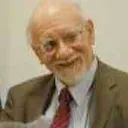Stay in the Loop
BSR publishes on a weekly schedule, with an email newsletter every Wednesday and Thursday morning. There’s no paywall, and subscribing is always free.
Trios and boleros
Dolce Suono: Música en tus Manos

Contemporary musicians have to be quick-change artists. An actor can play Ibsen night after night for weeks and shift to Tom Stoppard a few weeks later. A musician may jump from Haydn to a modern composer like John Adams in the first half of a single concert.
Dolce Suono’s last concert of the season contained three trios that spanned over 100 years, from 1912 to May 2015. They all had links to Latin American and Spanish culture, but they were composed by a Mexican, an Italian, and a Chinese-born Chinese American. Not only that, the trios were interspersed between four sets of Mexican, Cuban, and Brazilian popular songs and dances.
Charles Abramovic played in every item on the program, as pianists often do, so he had to adapt to the spirit of the whole range, without any breaks between pieces. For the first trio, he partnered with violinist Solomiya Ivakhiv and cellist Gabriel Cabezas in the first movement of Manuel Ponce’s 1912 Trio Romantico. Ponce is noted for his work with Mexican popular songs, but the opening movement of the Trio Romantico is a marvelous example of the European romantic tradition, with arching melodies, sonorous harmonies, and lots of passion and poignancy. From the very first bars, you can tell it came from the same milieu as the better known trio Ravel composed for the same instrumental combination two years later.
Global multiculturalism
Zhou Tian’s Viaje is a prime example of 21st-century global multiculturalism. Zhou was asked to compose something with a Spanish or Latin American connection, so he turned to classic Spanish literature and produced a piece based on Spain’s legendary military hero El Cid.
This was Viaje’s second world premiere in a month. In April, Dolce Suono premiered the original quintet version, with Mimi Stillman’s flute interacting with the Dover String Quartet. In this version, Stillman again supplied the flute, with Abramovic and Cabezas substituting for the quartet. Viaje isn’t as lush and soaring as Ponce’s trio, but you can still hear the clatter of arms and the basic nobility of the tale, even if you aren’t familiar with the original story.
Nino Rota wrote the scores for over 150 movies, including The Godfather and Fellini’s La Strada. His 1958 trio is entitled Trio for Flute, Violin, and Piano, with no extra-musical references, but it plays as though it’s a film noir soundtrack. Musically, Rota explores the sonorities the flute and violin create when they play in unison and includes piano effects like high, ringing harmonies. (It’s easy to focus on the performers on the front of the stage when you have two musicians like Stillman and Ivakhiv holding forth between you and the pianist. Resist the temptation. The guy in the back is usually doing things that are just as fascinating.)
A little goes a long way
The popular music segments featured a special guest, guitarist and singer Pablo Reyes, with arrangements and inventive percussion by Dolce Suono’s creative percussionist Gabriel Globus-Hoenich. The arrangements provided some good, finger-snapping fun, but I would have been happier if the program had included less of the popular stuff and all the movements of the Trio Romantico.
I don’t object to programs that include some popular music — Lyric Fest often includes show tunes in its song programs and Piffaro schedules popular Renaissance dances — but a little bit goes a long way. Popular music is fun to dance to, and musicians often enjoy playing it. But it isn’t designed for the kind of sustained, concentrated listening we engage in at concerts. It doesn’t deliver the variety and emotional range concert listening requires.
A simple gift
The concert was preceded by a special event for early arrivals. The Dolce Suono musicians did a “side by side” with students from Pan American Academy, a North Philadelphia bilingual charter school with 700 K-12 students.  The students added violins and recorders to slowish performances of Simple Gifts, Going Home, and Pachelbel’s Canon. The Dolce Suono pros collaborated with them in exactly the same way they work with one another.
The students added violins and recorders to slowish performances of Simple Gifts, Going Home, and Pachelbel’s Canon. The Dolce Suono pros collaborated with them in exactly the same way they work with one another.
Dolce Suono’s work with the Academy is part of a two-year initiative funded by a grant from the Knight Foundation. The initiative will continue for another two years thanks to a grant from the William Penn Foundation. The connection is abetted by the fact that Mimi Stillman, the daughter of two linguists, speaks fluent Spanish. I’ve often felt that musicians are engaging in neurological acrobatics when they give a pre-concert talk, since speech and music seem to employ different parts of the brain. I’m even more impressed when a musician switches between languages as she delivers the talk.
Above right: Mimi Stillman visited Celina Velez's Pan American Academy music class for a final rehearsal before their concert appearance. (Photo courtesy of Dolce Suono.)
What, When, Where
Dolce Suono: Música en tus Manos (Music in Your Hands)/The Americas Project. Ponce, Trio Romantico. Zhou, Viaje for Flute, Cello, and Piano. Rota, Trio for Flute, Violin, and Piano. Boleros, choros, sambas, salsa arranged by Gabriel Globus-Hoenich. Pablo Reyes, voice and guitar. Solomiya Ivakhiv, violin. Mimi Stillman, flute. Gabriel Cabezas, cello. Charles Abramovic, piano. Gabriel Globus-Hoenich, percussion. Saturday, May 30, 2015, Lenfest Hall, Curtis Institute of Music, 1616 Locust Street, Philadelphia. www.dolcesuono.com
Sign up for our newsletter
All of the week's new articles, all in one place. Sign up for the free weekly BSR newsletters, and don't miss a conversation.
 Tom Purdom
Tom Purdom